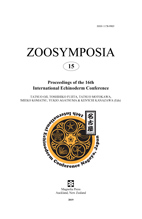Abstract
In the present study, we evaluated the efficiency of a minimally destructive and a destructive mitochondrial DNA extraction method. The first method extracted total DNA from epidermis and muscles of the spines and yielded varying PCR efficiency values that are dependent on the template concentration, which could be attributed to contamination by pigment and/or genomic DNA in the tissue. The second method extracted mitochondrial DNA from fractionated mitochondria obtained from tissues and coelomic fluid inside the test. Using this method, PCR products and purified mitochondrial DNA were used for sequencing on a next generation sequencer (Ion PGM). Direct sequencing of the purified mitochondrial DNA led to complete recovery of the mitochondrial genomes; however, contaminants were present. PCR failure was commonly encountered using the first method but was absent using the second method. The two extraction methods were compared to the commonly used destructive method that extracted total DNA from gonad or coelomic fluid inside the test. PCR results indicated that the destructive method exhibited similar performance as the first method. The present study generated 11 complete and one partial mitochondrial genome sequences for 12 species. The complete mitochondrial sequences from the order Cidaroida were sequenced for the first time. Phylogenetic trees constructed based on individual genes showed various topologies. Phylogenetic relationships estimated from all protein-coding regions of the mitochondrial genome were consistent with the order-level relationships estimated from molecular and morphological data in previous studies.

